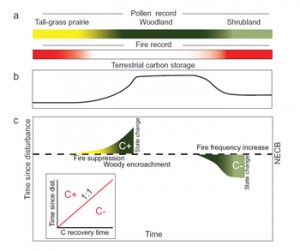
In Reconstructing Disturbances and Their Biogeochemical Consequences over Multiple Timescales, Kendra McLauchlan and colleagues, including John Battles, overview how disturbances are reconstructed using natural records. Here is the abstract:
Ongoing changes in disturbance regimes are predicted to cause acute changes in ecosystem structure and function in the coming decades, but many aspects of these predictions are uncertain. A key challenge is to improve the predictability of postdisturbance biogeochemical trajectories at the ecosystem level. Ecosystem ecologists and paleoecologists have generated complementary data sets about disturbance (type, severity, frequency) and ecosystem response (net primary productivity, nutrient cycling) spanning decadal to millennial timescales. Here, we take the first steps toward a full integration of these data sets by reviewing how disturbances are reconstructed using dendrochronological and sedimentary archives and by summarizing the conceptual frameworks for carbon, nitrogen, and hydrologic responses to disturbances. Key research priorities include further development of paleoecological techniques that reconstruct both disturbances and terrestrial ecosystem dynamics. In addition, mechanistic detail from disturbance experiments, long-term observations, and chronosequences can help increase the understanding of ecosystem resilience.
